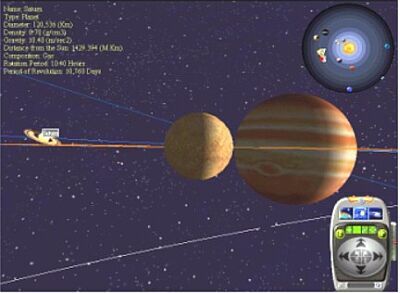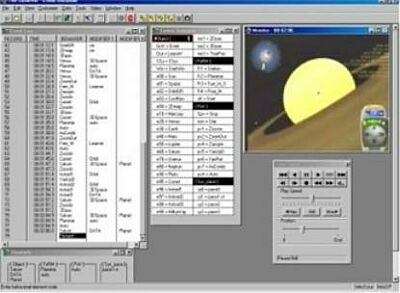Using The Observer to analyze exploration in virtual worlds
G.E. Gazit1 and D. Chen2
1School of Eduction, Tel Aviv University, Tel Aviv, Israel
2David, Tel Aviv, Israel
In reality, we learn about new environments with a fixed frame of reference by moving within them. The frame of reference aids orientation and navigation [1]. In contrast, a Virtual Environment representing the Solar System (VESS) on a computer screen has no stable frame of reference. Imagine 'flying' through the solar system, moving with the planets as they revolve in orbit around the sun. Imagine controlling your visual journey through the solar system, deciding what to see and from which viewpoint. These learning experiences, and much more, form part of VESS: a unique interactive virtual environment [2].
How can we identifiy and describe systematically the ways by which students explore VESS? How can we represent the navigation procesess that take place in a VE with a dynamic frame of reference?
To address these questions,
we used The
Observer to analyze exploration processes in VESS. The interactions of ten
10th grade high school students with VESS were videotaped. A qualitative method
for analysis was developed - SEE (Systematic Exploration of Exploration) - based
on the ideas of Marshall [3] and the work of Golani & Drai [4]. The Observer
served to convert the videos into meaningful data, allowing us to investigate
at the level of observable actions, and at the level of interpretation. Each
action and verbal expression made by the students was coded with a one-second
resolution, producing a 'thick' description of the exploration process. Two
basic types of behavior were identified:
- 'On the move' mode - the student interacts with the dynamic VESS
- 'Freeze' mode - the student interacts with the static VESS (Figure 1)

Figure 1. A "freeze"
screen from the VESS.
'Freeze' mode emerges
after several minutes of exploring in 'on the move' mode. The student is cognitively
active, organizing the data collected, making categorizations, and so on. This
pattern of 'freezing' VESS after exploring it in dynamic mode occurred several
times during the spontaneous exploration task.
Within 'on the move'
mode, three different exploration patterns were found: the 'butterfly', 'bee'
and 'eagle' patterns. Each pattern differs according to the pace and duration
of object exploration, the way the space is manipulated, and the visual and
symbolic data collected (Figure 2).

Figure 2.
VESS video
analysis.
References
- Lackner, J.R.; DiZio, P. (1998). Spatial Orientation as a Component of Presence: Insights Gained from Nonterrestrial Environments. Presence, 7(2), 108-115.
- Yair, Y.; Mintz, R.; Litvak, S. (accepted for publication). 3D-Virtual Reality in Science Education: An Implication for Astronomy Teaching. Journal of Computers in Mathematics and Science Teaching.
- Marshall, G. (1999). Exploring Assessment. Education and Information Technologies, 4 (3), 311-327.
- Golani, I.; Drai, D. (2001). SEE: A tool for visualization and analysis of rodent exploratory behavior. Neuroscience & Biobehavioral Rev., 25-5, 409-426.
Paper presented at Measuring Behavior 2002
, 4th International Conference on Methods and Techniques in Behavioral
Research, 27-30 August 2002, Amsterdam, The Netherlands
© 2002
Noldus Information Technology bv

